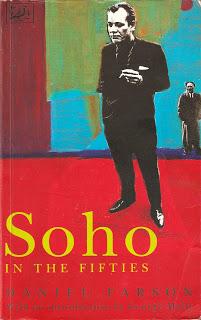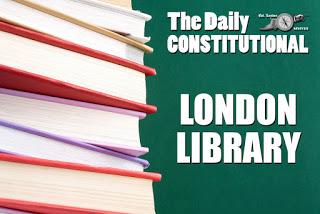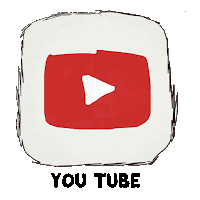In this ten-week series of posts I'll be drawing in literary fiction, popular fiction, graphic novels and non-fiction to create a reading list as disparate and inspiring as London itself.
The 10 titles are linked in so much as each one features at least one London location – each post will also feature a map to one of the locations
No.7. Soho in the Fifties
By Dan Farson
(Pimlico 1987)
A work that rattles along with all the élan of a great novel, Daniel Farson’s Soho in The Fifties is an account of London’s most forgiving and tolerant quarter. It is told by that most unique of all Soho-ites: a man who was both there and who can remember he was there.
 “Soho,” writes Farson, the great-nephew of Bram Stoker, “has always been a state of mind rather than a boundary.” And the minds that populate his narrative (the main section of which is structured as a 24-hours-in-the-life-of-Soho documentary) are some of the sharpest of the mid-20th Century. Artist Francis Bacon and journalist Jeffrey Barnard swagger through the narrative, rubbing shoulders with a picaresque gallery of characters who, while less celebrated on the international stage, remain Soho legends. Characters such as Norman Balon of the Coach and Horses (the man styled by Barnard as the Rudest Landlord in London) and Muriel Belcher, the éminence grise of Dean Street and proprietress of the legendary watering hole The Colony Room.
“Soho,” writes Farson, the great-nephew of Bram Stoker, “has always been a state of mind rather than a boundary.” And the minds that populate his narrative (the main section of which is structured as a 24-hours-in-the-life-of-Soho documentary) are some of the sharpest of the mid-20th Century. Artist Francis Bacon and journalist Jeffrey Barnard swagger through the narrative, rubbing shoulders with a picaresque gallery of characters who, while less celebrated on the international stage, remain Soho legends. Characters such as Norman Balon of the Coach and Horses (the man styled by Barnard as the Rudest Landlord in London) and Muriel Belcher, the éminence grise of Dean Street and proprietress of the legendary watering hole The Colony Room.Farson’s narrative even takes us a little further north of the 21st Century Soho, over Oxford Street to the area to which he refers to as North Soho (Fitzrovia today) to reveal licentious goings-on at the Fitzroy Tavern and in search of the painters Robert Colquhoun and Robert MacBryde as they evade eye-watering bar bills all over W1. It’s a revealing insight: Soho has changed in shape as well as tone.
The great surviving characters of Soho are the pubs that serve as backdrop to the tale: The French House and the Coach and Horses remain in rude health in the 21st Century. “It’s ironic,” writes Farson of those Soho hostelries, "that Karl Marx and Logie Baird both lived in Soho, for politics and last night’s television are rarely discussed in Soho, though they are the mainstay in [most other] British pubs.”
Farson’s only oversight is the importance of music to this part of town. A forgivable omission given that the author moved in a world of letters and media; and one that is rectified with a peerless introduction by the late, great English jazz musician and writer George Melly. A rare treat: two great writers for the price of one.
(The edition illustrated is the Pimlico paperback from 1993)
One of the most prominent pubs mentioned in the book is The Coach & Horses. Still going strong having just won a fight against gentrification, you can find it here…

Next week… The Rats (1974)
By James Herbert Click the button below to book a place on one of my scheduled public tours…

Keep In Touch…






